Sleeping in Volcanoes
Two and a half million people do it every year, in the Yellowstone caldera. So even though “sleeping in volcanoes” sounds a little exotic, our camp in a volcanic crater was pretty pedestrian. But still kind of cool, too.
The Newberry Volcanic Monument is just southeast of Bend, Oregon, and that’s where there’s a really big caldera, about 25 miles in diameter. The caldera has been “bulged” in its center, and the result has produced two small lakes on the east and west extremes. It’s a really nice area, and there are several campgrounds, boat ramps, and many trails around the lakes and volcanic features.
In fact, it’s such a nice area that it gets absolutely mobbed in peak season. A Ranger we talked to said they had passed 300,000 annual attendance, and that the place was an absolute zoo in the summer. His entire staff was only 7 people, and he was pretty strapped to keep up with the place. In the late September of our visit, he was visibly relieved that the season had relaxed.
For our off-season exploring, it was a wonderful place to see some very unusual volcanism, relax, and get ready to go back to California.
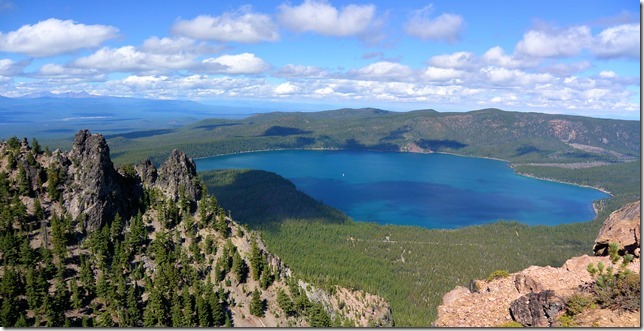
One of the most unusual features in the area is the Obsidian Flow, a huge “puddle” of obsidian and obsidian pumice that spewed forth about 6,000 years ago. The black-glass obsidian is mingled with gray (high density) and white (low density) pumice in a catastrophic jumble of dry tumbled rock.


Although it’s less than a quarter of all the rock deposited, there is so much obsidian here that the Flow became a focus of trade for early stone-age toolmakers. The relatively rare obsidian was of such value that workable “cores”, pieces which could be fashioned into tools and weapons, carried near-monetary status. People traveled on foot for hundreds of miles to collect the treasure. Today, it’s all under protected status, and there is still a LOT of it remaining.

The stuff is so hard and has so little nutrient value that almost nothing grows here, even after six millennia.
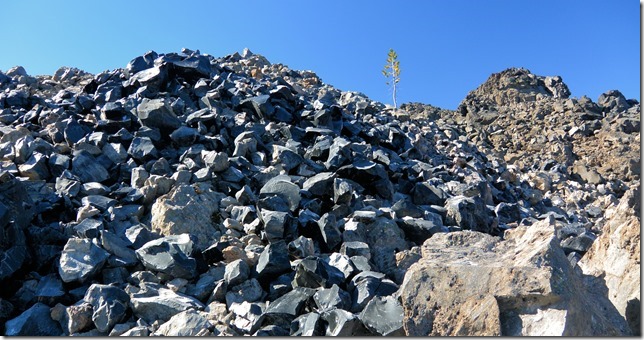
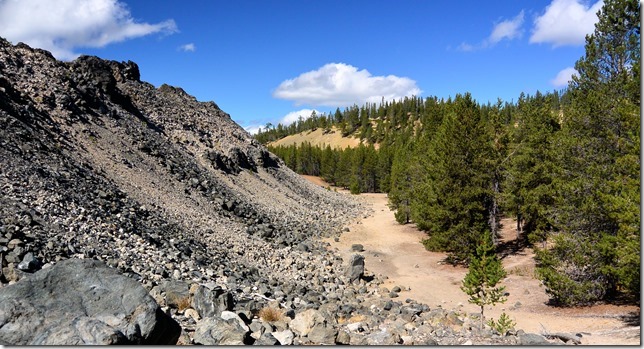
A view from Paulina Peak shows one part of the massive Flow, the southeast portion of the huge caldera’s rim, and East Lake.

In yet another area of the Monument, we visited the Lava Cast Forest. We had never heard of such a phenomenon, where slow-moving lava bumps up against mature trees; the moisture in the tree trunks cools and solidifies the lava, which forms a shell around the tree. The tree burns away and leaves a “cast” of itself. There are dozens of these, both vertical and horizontal, along a mile-long trail. Here’s one that was standing – – –

– – – and another that was lying down at the time of the eruption. Some of the cast-shells have been weathered over time, or simply stolen by thoughtless humans. Early photos show eight-foot-tall tree-trunk castings, but they are no more to be found or seen.
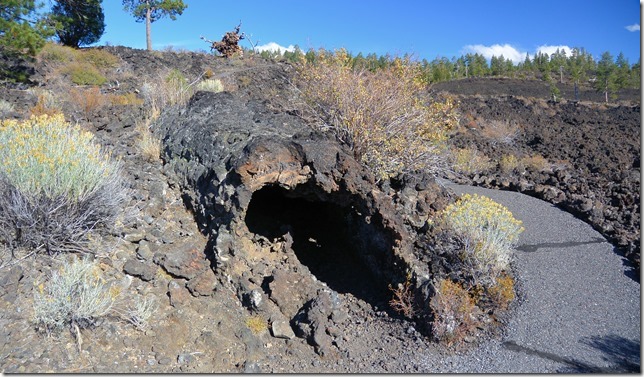
Besides all the volcanism, the area is just plain pretty. We once again found a lake-side camp, and spent some time watching the Coots swim around and call out with their short reedy chirps.


All too soon, it was time to leave the caldera and head for our last stop — to inspect and service Howie. As we headed southeast across Oregon, we picked up the gorgeous Rogue River below Crater Lake, and followed it all the way to Grants Pass. Lovely day.
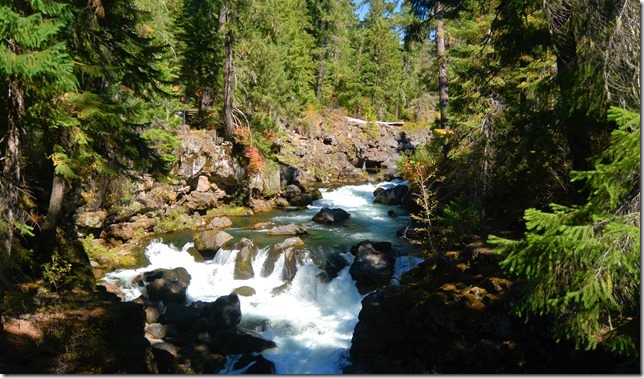
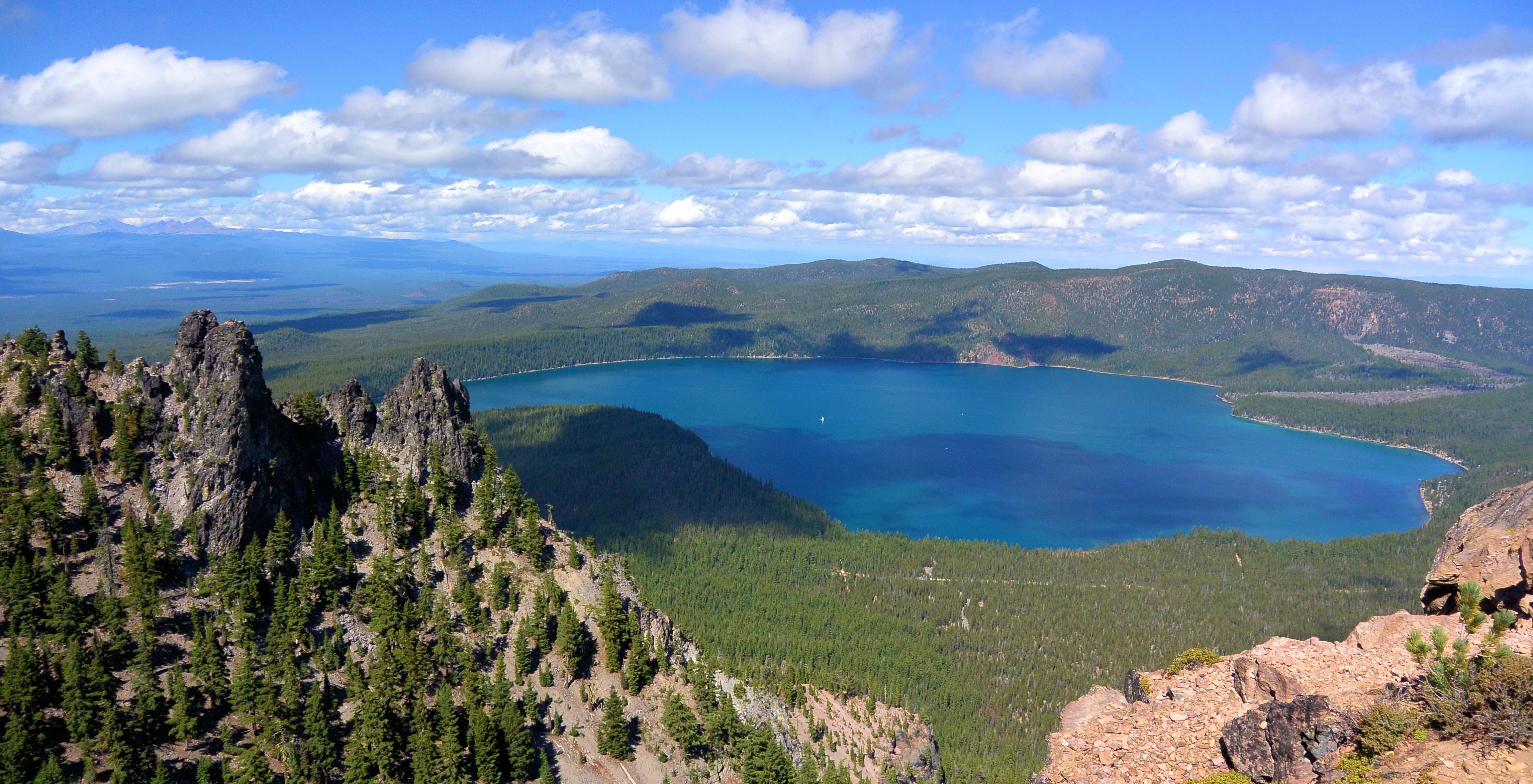
Beautiful pictures and great writing! I have followed you for quite a while and really look forward to your e-mails. Be safe.